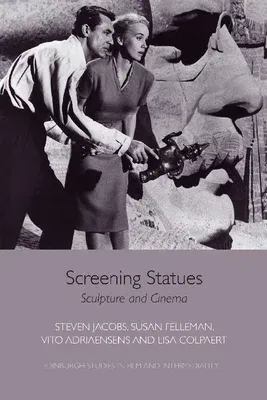Steven Jacobs
(Author)Screening Statues: Sculpture and CinemaPaperback, 26 February 2019

Qty
1
Turbo
Ships in 2 - 3 days
In Stock
Free Delivery
Cash on Delivery
15 Days
Free Returns
Secure Checkout

Part of Series
Edinburgh Studies in Film and Intermediality
Print Length
224 pages
Language
English
Publisher
Edinburgh University Press
Date Published
26 Feb 2019
ISBN-10
1474431704
ISBN-13
9781474431705
Description
Product Details
Book Format:
Paperback
Country of Origin:
US
Date Published:
26 February 2019
Dimensions:
22.86 x
15.24 x
1.78 cm
ISBN-10:
1474431704
ISBN-13:
9781474431705
Language:
English
Pages:
224
Publisher:
Weight:
408.23 gm